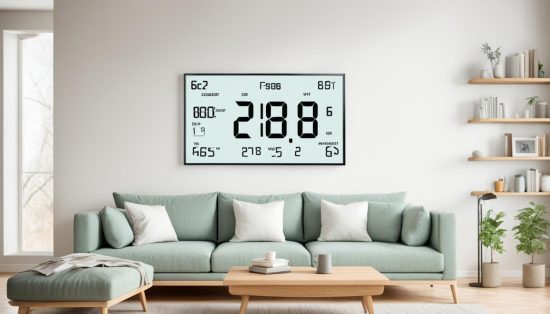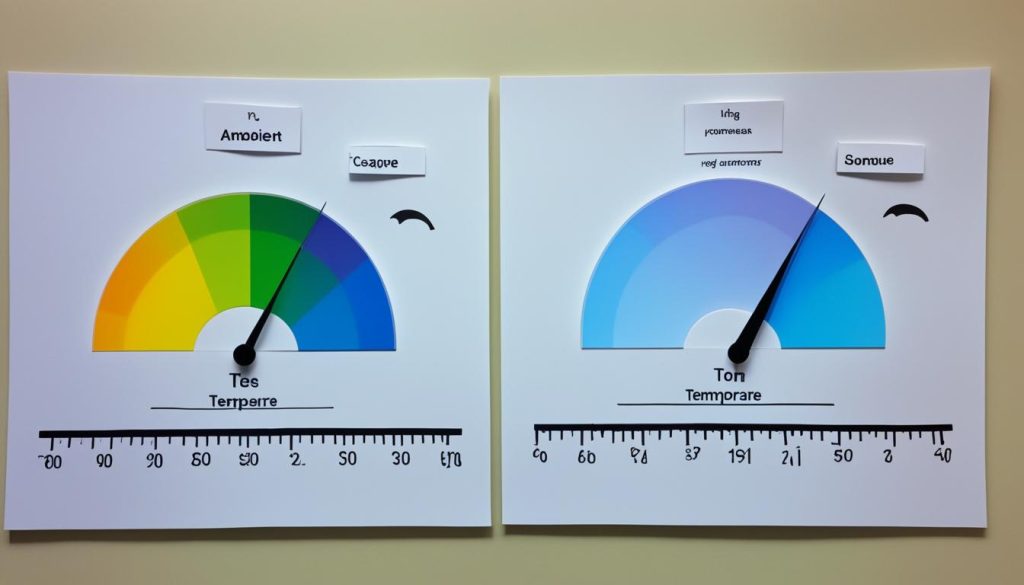Room temperature generally refers to the range of air temperatures that are comfortable for most people indoors, typically around 20-22 degrees Celsius or 68-72 degrees Fahrenheit. This range is considered ideal for comfort and energy efficiency. However, individual preferences, climate, humidity, and air circulation can influence what feels comfortable as “room temperature.” Understanding these factors like what is room temperature in Celsius, can help create a more comfortable living environment.
What Is Room Temperature?

Room temperature is the temperature range that is considered comfortable for most people in indoor spaces. It is the temperature at which people feel neither too hot nor too cold when dressed in typical clothing. Room temperature is often associated with a comfortable and pleasant environment for daily activities.
While the specific numerical value may vary depending on cultural and regional factors, a general consensus is that room temperature falls within the range of approximately 20-22 degrees Celsius or 68-72 degrees Fahrenheit.
It’s important to note that individual preferences for room temperature can vary, and factors like humidity, air circulation, and personal clothing choices can also affect comfort levels.
Room Temperature and Measurements
What is Room Temperature in Celsius?
Room temperature can be measured and expressed in different temperature scales, including Celsius. In the Celsius scale, room temperature typically falls within the range of 20-22 degrees. However, it’s important to note that the exact numerical value may vary depending on individual preferences, local climate, and other factors. To measure room temperature in Celsius, a thermometer can be used. By placing a thermometer in the room and allowing it to stabilize, the temperature reading can be obtained. This can help in determining the current temperature and adjusting the thermostat or other temperature control systems as needed.

Measuring Room Temperature
Room Temperature of a Typical Home in the US
The room temperature of a typical home in the United States can vary depending on various factors such as climate, insulation, and personal preferences. However, the general consensus is that the average room temperature in American homes falls within the range of 68-72 degrees Fahrenheit or 20-22 degrees Celsius. This temperature range is considered comfortable for most people and is often recommended for energy efficiency and cost savings.
It’s important to note that individual preferences and factors like seasonal variations can lead to slight variations in room temperature among different households. Some people may prefer slightly cooler or warmer temperatures based on personal comfort.
Room Temperature vs Ambient Temperature
Room Temperature:
- Refers to the comfortable temperature range for most people indoors.
- Typically around 20-22°C or 68-72°F.
- It is the temperature at which people feel comfortable when dressed in typical clothing.
Ambient Temperature:
- Refers to the actual temperature of the air or surroundings in a specific location, regardless of comfort.
- Can be higher or lower than room temperature.
- Requires heating or cooling to achieve comfort.
- Understanding the difference is important for determining climate control needs and ensuring a comfortable indoor environment.
Differences:
- Room temperature is subjective and based on comfort, while ambient temperature is objective and reflects the actual temperature.
- Room temperature is influenced by factors like clothing and activity level, while ambient temperature is influenced by external factors like weather and heating/cooling systems.
- Room temperature is often controlled to maintain comfort, while ambient temperature can fluctuate naturally.

Why does “room temperature” matter for cooking?
Room temperature plays a crucial role in cooking, especially concerning specific ingredients and recipes. Ensuring that ingredients are brought to room temperature before cooking can greatly contribute to even cooking and enhance flavor development.
Baking
In baking, ingredients such as eggs, butter, and other dairy products are best used at room temperature. This allows them to emulsify more easily, resulting in better texture and improved rise in baked goods.
Meat and Poultry
Allowing meat and poultry to come to room temperature ensures more even cooking throughout without risking undercooking or overcooking.
Impact on Cooking Time
The impact of room temperature goes beyond the quality of the finished dish. Allowing ingredients to reach room temperature can also impact overall cooking time, as ingredients that are too cold may take longer to cook.
Recipe Specifics
When attempting new recipes or following specific ingredient recommendations, it is important to check if room temperature is required for optimal cooking outcomes.
By considering the importance of room temperature in cooking, you can elevate your culinary creations and ensure the best possible result
FAQs on Room Temperature in Celsius
What should I do if my room temperature is consistently too high or too low in Celsius?
If your room temperature is consistently uncomfortable, consider adjusting your heating or cooling systems, improving insulation, using fans or humidifiers, sealing drafts around windows and doors, and controlling sunlight with curtains or blinds. If these measures don’t help, consult with an HVAC technician to assess your systems.
Does humidity affect perceived room temperature in Celsius?
Yes, humidity can affect how we perceive room temperature. Higher humidity levels can make a room feel warmer, while lower humidity levels can make it feel cooler.
Is there an ideal room temperature for sleeping in Celsius?
The ideal room temperature for sleeping is generally between 18 and 21 degrees Celsius. A cooler room can promote better sleep quality.

